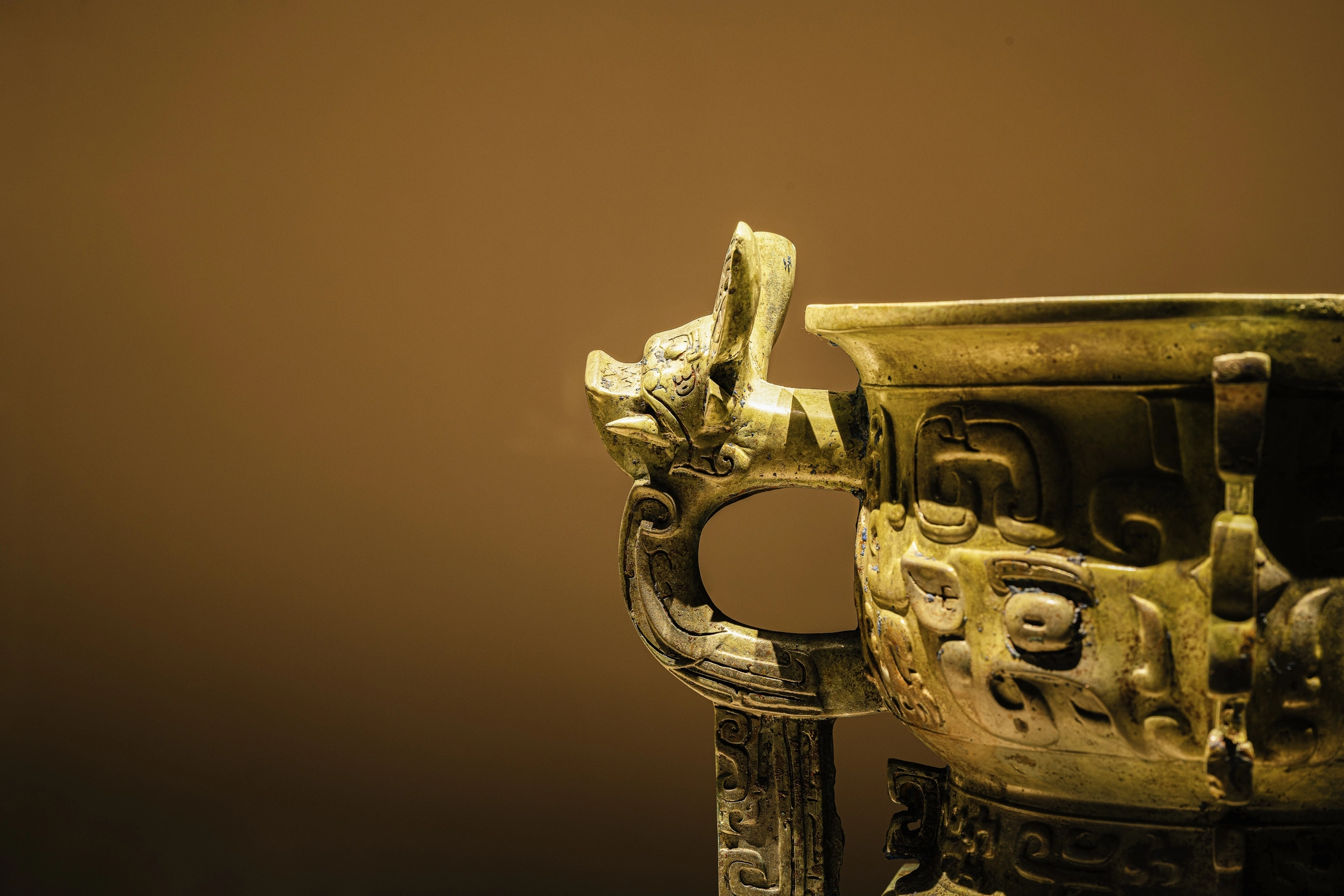Gold has been around since the dawn of time, playing a major role in shaping human civilizations and economies worldwide. Historians generally agree that gold was one of the first metals to be discovered and used by humans, along with silver and copper. Hieroglyphs describing gold have been found from as early as 2600 BC.
We know that gold was discovered thousands of years ago, but it’s hard for historians to pinpoint the discovery to one specific civilization or point in time. It likely occurred simultaneously in several different parts of the world. The mining and use of gold can be traced back to ancient civilizations including the Mesopotamians, Egyptians, Greeks, Romans and more. Ancient gold was used for jewelry, religious objects, art and sculptures, vessels, architectural decor, burial masks, and eventually coinage.
Ancient Egypt & Beyond
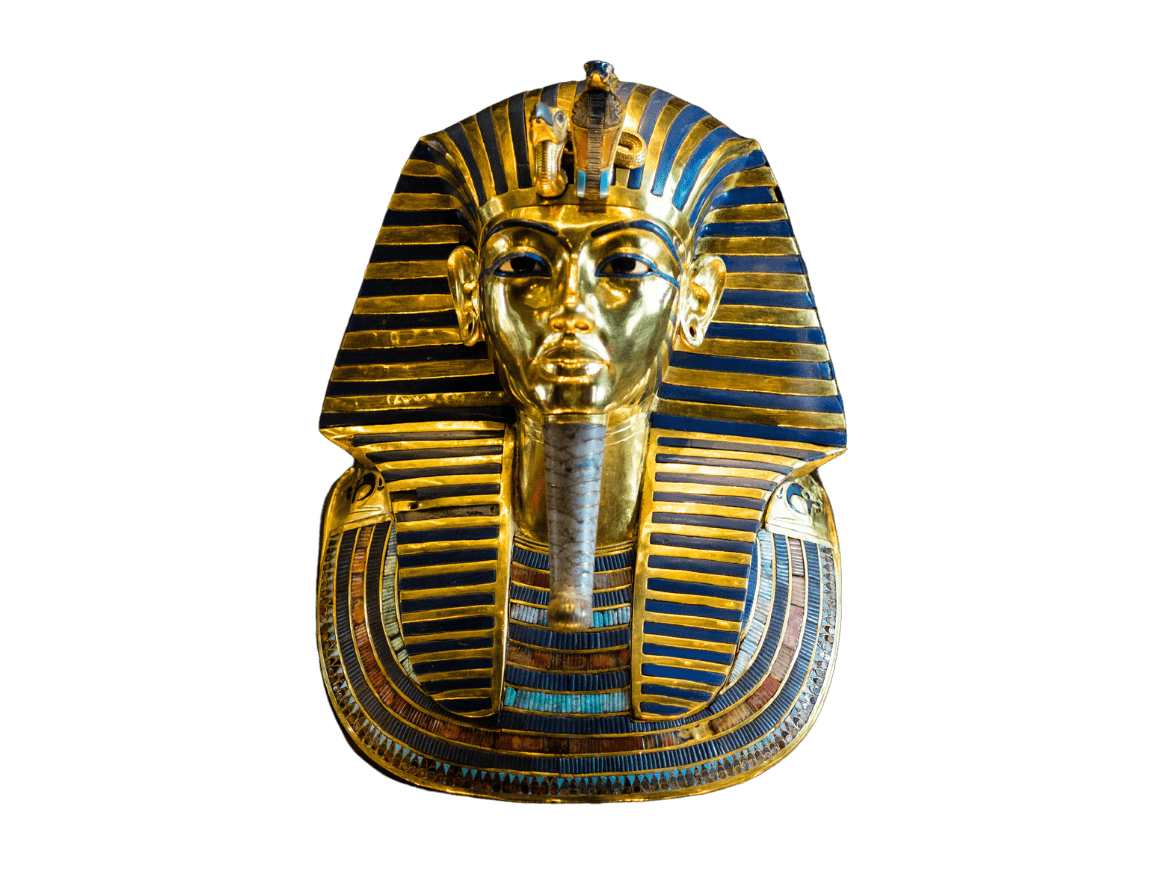
Ancient Egypt is particularly famous for its extensive use of gold, as the Egyptians had the resources to become a major gold-producing region. The terrain of ancient Egypt was rich in gold. Archaeologists and historians believe that much of it came from the mountainous region between the Nile River and the Red Sea, along with the Eastern Desert and the region of Nubia. Thought to be named after the Egyptian word for gold (“nub”), Nubia is where the first mining sites were constructed.
Believed to be the flesh of the gods, gold was cherished and associated with the ancient Egyptian sun god Ra. It was seen as a sacred metal representing eternal life, the sun’s radiant power, and the king’s divine authority. Gold was commonly used in religious rituals and offerings to the gods. It was also used to decorate the tombs of pharaohs and burial masks. When buried with the deceased, gold was thought to accompany and protect them in the afterlife.
Gold Art and Jewelry
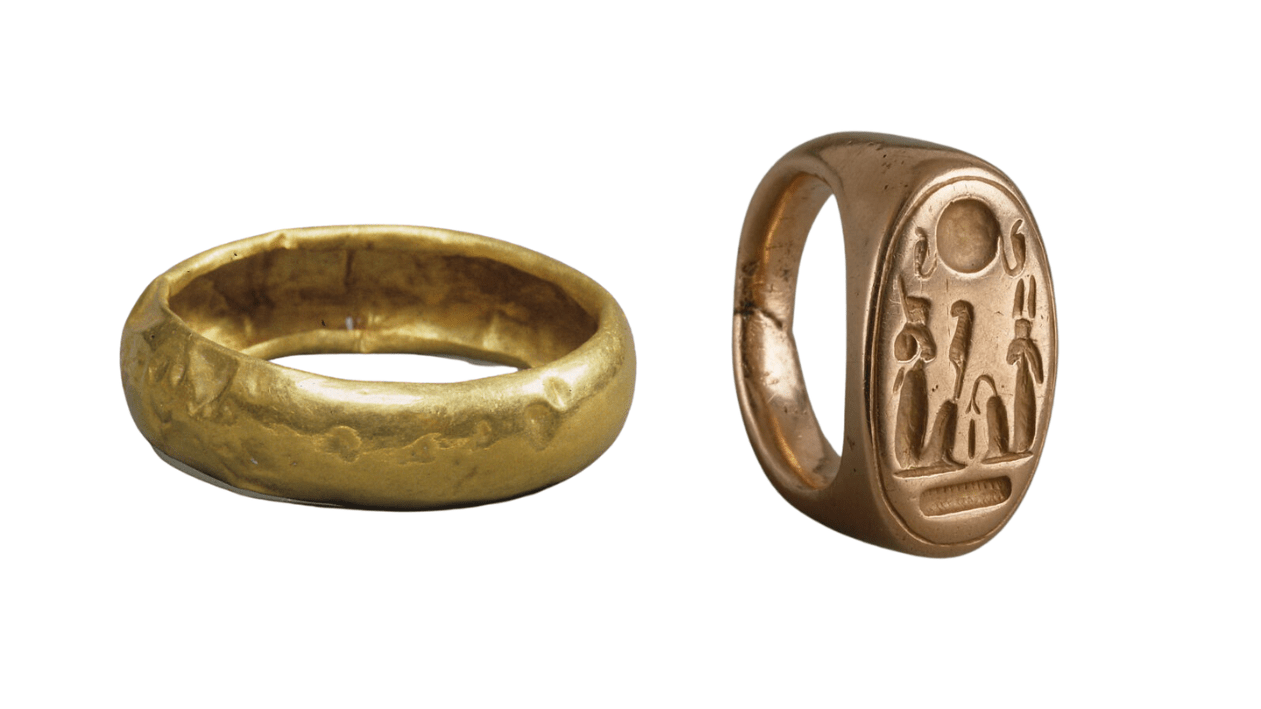
Ancient gold was also used by the Egyptians in painting, sculpting and architecture. Artists used gold leaf (very thin sheets of gold) to decorate statues, tombs and temples.
Jewelry makers crafted elaborate gold necklaces, bracelets, rings, earrings, and anklets. Not only was gold jewelry beautiful, but it served as a symbol of wealth and status. Gold bands were often worn as symbols of affluence and social standing, associated with the elite and ruling class.
In many cultures, people invested in gold jewelry not only for its elegance, but as a tangible asset that could be easily transported or traded if needed. Gold jewelry acted as a portable and universally recognized store of wealth that could be passed down through generations.
Practical Uses
Aside from the sacred and elite, gold also served practical uses. Its softness and malleability made it perfect for crafting into different objects. Ancient cultures used gold for dentistry, long predating the gold dental crowns that are still used today. The Romans, for example, had a sophisticated method for making gold dental crowns and fixed bridgework.
A Valued Commodity
Before gold was used as a standardized currency, un-coined chunks of gold, silver and other precious metals were traded as commodities. This, however, was inefficient because people needed to assess the weight and purity of the metal, which wasn’t easy to do on the spot. Eventually, gold coins were standardized in weight, purity and design – but more on that in a bit.
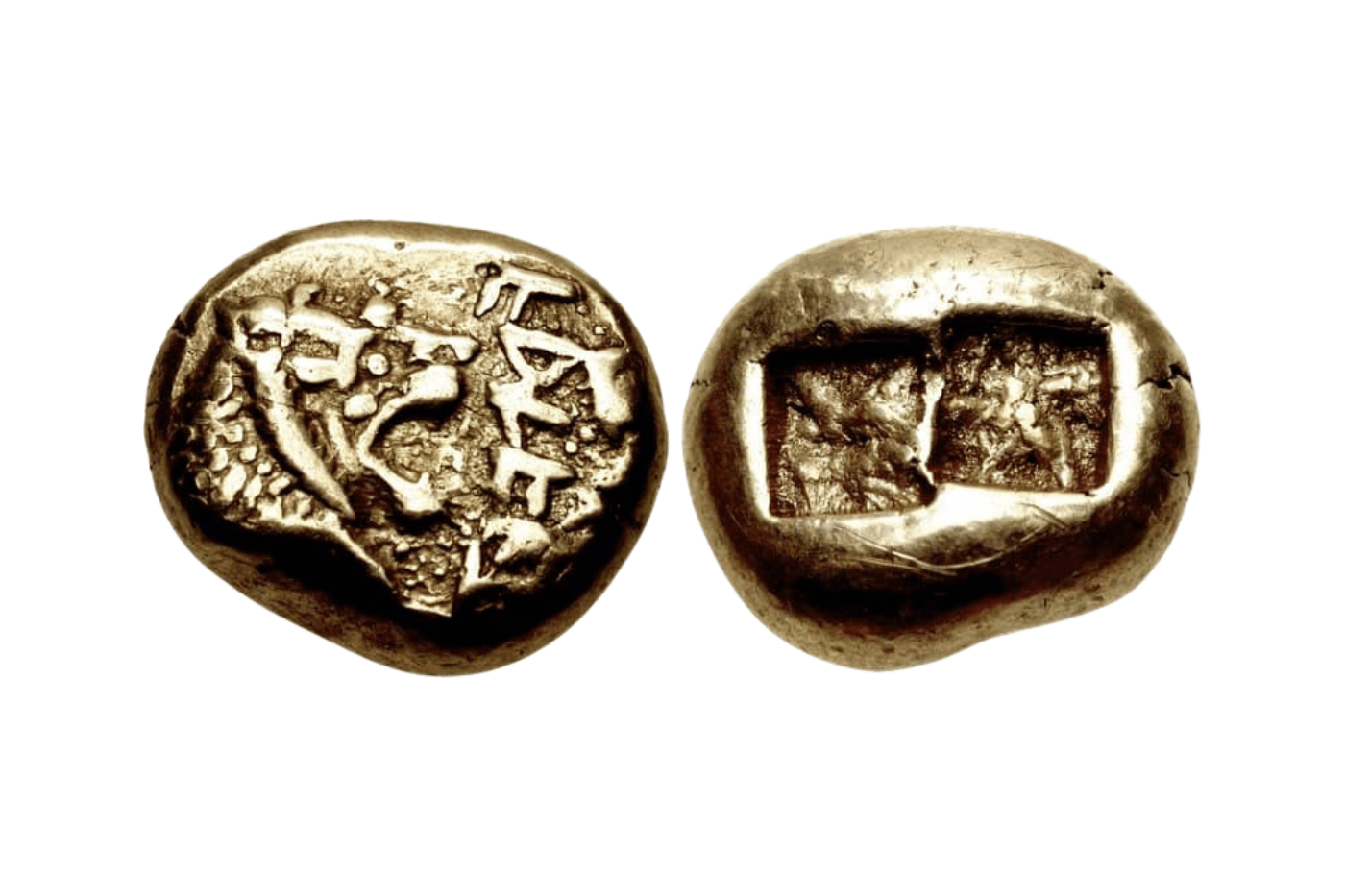
The Rise of Gold Coinage
Historians have mixed beliefs on who created the first gold coins, but many credit Croesus, King of ancient Lydia (modern day Turkey). Under the rule of King Croesus, the Lydians started minting standardized coins around 600 BC. These coins were called staters, and they were stamped with the design of a roaring lion. They were made of electrum – a naturally occurring gold-silver alloy. Standardizing the weight and design of coins was a major milestone in monetary history!
Greek and Roman Gold Coins
Along with the Lydians, both the Greek and Roman empires made significant advancements in coinage. In ancient Greece, particularly Athens, gold coins were minted with standardized weight and purity. The use of Greek gold coins encouraged trade and economic activity.
The Romans started minting large quantities of gold coins called the aureus under Julius Caesar around 46 BC. This was the standard Roman gold coin until it was replaced by the solidus in 312 AD. Both the aureus and the solidus were widely circulated and played vital roles in the functioning of the economy.
Stability and Economic Growth
The Romans’ emphasis on standard weights and measures paired with their extensive network of mints made for an enduring coinage system, which remained relatively stable over centuries. The Roman gold coin’s stability further encouraged economic growth throughout the empire, fueling trade and exploration.
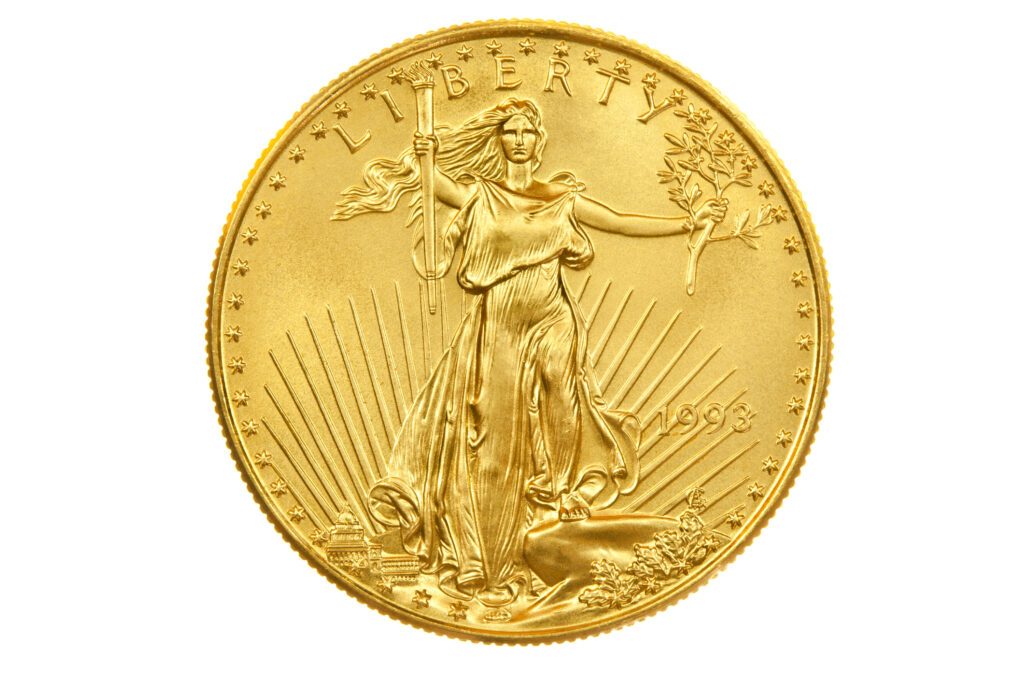
Maintaining Stability
Rulers from around the globe have worked to combat the production of counterfeit gold coins throughout history. Many of the earliest coins were simply hammered by regular people. These homemade coins were irregularly shaped, which allowed for people to clip small pieces off of them. Eventually one could collect enough clippings to melt down and create more coins!
Special stamps and engravings helped to prevent clipping, but people could still easily make counterfeit coins with their own homemade stamps and molds. From the first Lydian stater coins to the American Gold Eagles of today, minting has come a long way in becoming precise, efficient and standardized.
Timeless Value
It’s fascinating to learn about all of the different ways that gold has influenced global cultures and economies throughout history. Ancient gold coins and artifacts have helped historians learn a lot about early civilizations, and gold has remained a remarkable aspect of human life up to this day.
Gold always has been and always will be an object of admiration and timeless value, hence why Garfield Refining has been around for over 132 years. Keeping gold out of landfills and recycling this incredibly valuable precious metal brings purpose and pride to what we do!
Stay tuned to our blog for more insights on precious metals! Check out other fun articles like 3 Fun Facts About Gold, 3 Fun Facts About Silver, and Is Gold Rare in Space?
Established in 1892, Garfield will get you the most for your gold, silver, platinum, and palladium, and we offer the industry’s best customer service. Call us today at 800-523-0968 to find out why Garfield is a premier precious metals refinery!
Consider getting cash for gold, silver, or platinum and selling your precious scrap metal now by downloading a free shipping label.

